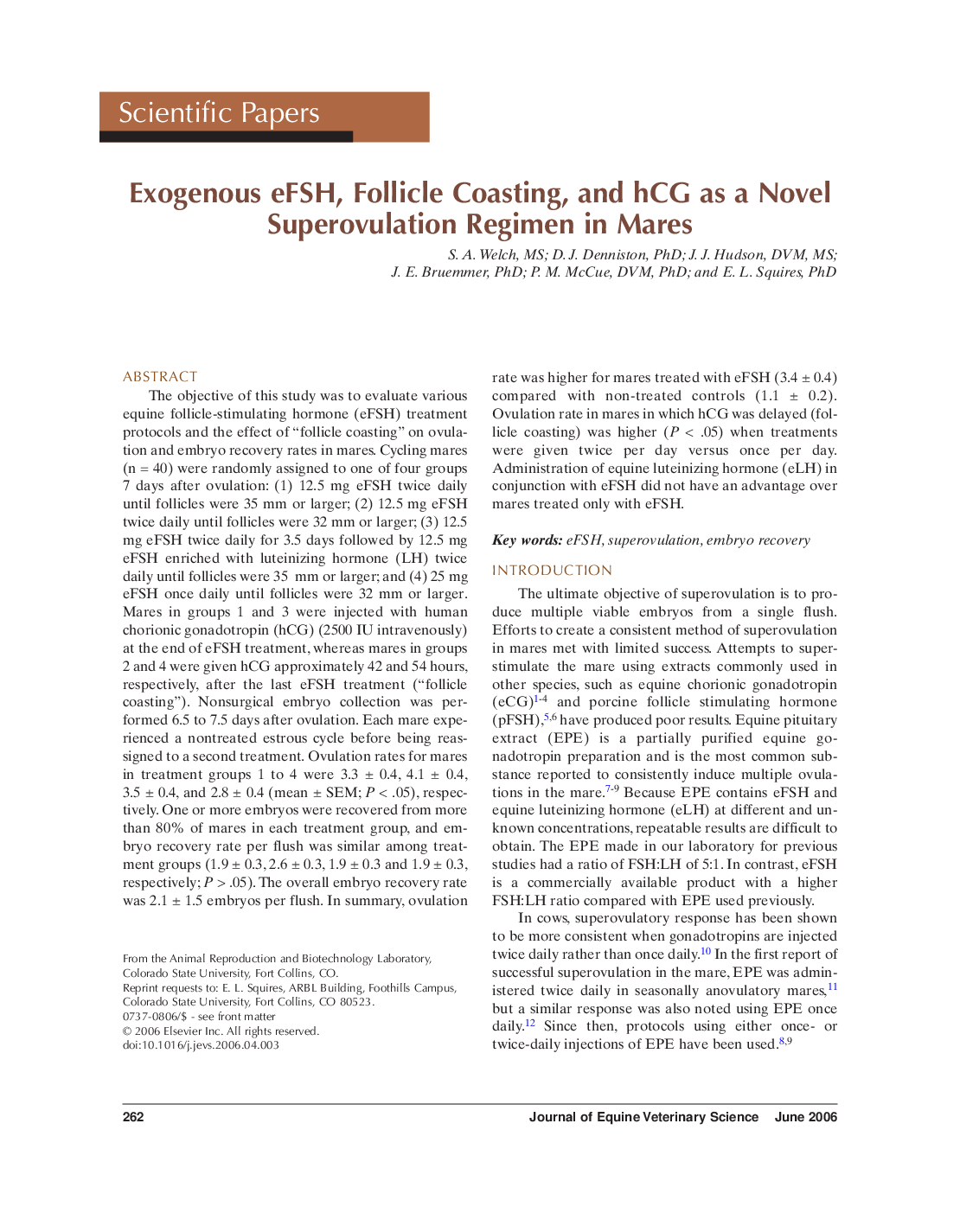| Article ID | Journal | Published Year | Pages | File Type |
|---|---|---|---|---|
| 2396472 | Journal of Equine Veterinary Science | 2006 | 9 Pages |
The objective of this study was to evaluate various equine follicle-stimulating hormone (eFSH) treatment protocols and the effect of “follicle coasting” on ovulation and embryo recovery rates in mares. Cycling mares (n = 40) were randomly assigned to one of four groups 7 days after ovulation: (1) 12.5 mg eFSH twice daily until follicles were 35 mm or larger; (2) 12.5 mg eFSH twice daily until follicles were 32 mm or larger; (3) 12.5 mg eFSH twice daily for 3.5 days followed by 12.5 mg eFSH enriched with luteinizing hormone (LH) twice daily until follicles were 35 mm or larger; and (4) 25 mg eFSH once daily until follicles were 32 mm or larger. Mares in groups 1 and 3 were injected with human chorionic gonadotropin (hCG) (2500 IU intravenously) at the end of eFSH treatment, whereas mares in groups 2 and 4 were given hCG approximately 42 and 54 hours, respectively, after the last eFSH treatment (“follicle coasting”). Nonsurgical embryo collection was performed 6.5 to 7.5 days after ovulation. Each mare experienced a nontreated estrous cycle before being reassigned to a second treatment. Ovulation rates for mares in treatment groups 1 to 4 were 3.3 ± 0.4, 4.1 ± 0.4, 3.5 ± 0.4, and 2.8 ± 0.4 (mean ± SEM; P < .05), respectively. One or more embryos were recovered from more than 80% of mares in each treatment group, and embryo recovery rate per flush was similar among treatment groups (1.9 ± 0.3, 2.6 ± 0.3, 1.9 ± 0.3 and 1.9 ± 0.3, respectively; P > .05). The overall embryo recovery rate was 2.1 ± 1.5 embryos per flush. In summary, ovulation rate was higher for mares treated with eFSH (3.4 ± 0.4) compared with non-treated controls (1.1 ± 0.2). Ovulation rate in mares in which hCG was delayed (follicle coasting) was higher (P < .05) when treatments were given twice per day versus once per day. Administration of equine luteinizing hormone (eLH) in conjunction with eFSH did not have an advantage over mares treated only with eFSH.
